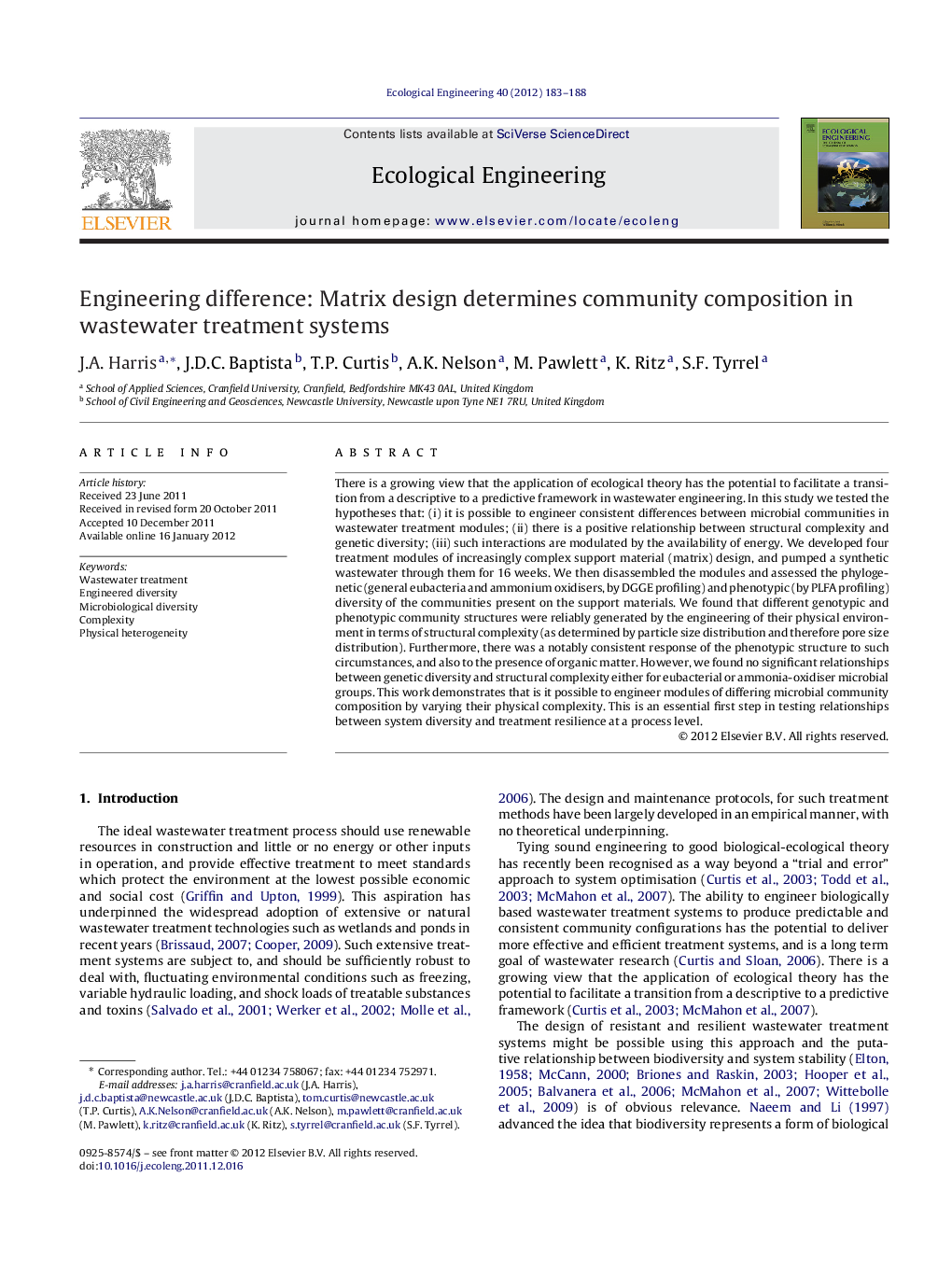| Article ID | Journal | Published Year | Pages | File Type |
|---|---|---|---|---|
| 4389965 | Ecological Engineering | 2012 | 6 Pages |
There is a growing view that the application of ecological theory has the potential to facilitate a transition from a descriptive to a predictive framework in wastewater engineering. In this study we tested the hypotheses that: (i) it is possible to engineer consistent differences between microbial communities in wastewater treatment modules; (ii) there is a positive relationship between structural complexity and genetic diversity; (iii) such interactions are modulated by the availability of energy. We developed four treatment modules of increasingly complex support material (matrix) design, and pumped a synthetic wastewater through them for 16 weeks. We then disassembled the modules and assessed the phylogenetic (general eubacteria and ammonium oxidisers, by DGGE profiling) and phenotypic (by PLFA profiling) diversity of the communities present on the support materials. We found that different genotypic and phenotypic community structures were reliably generated by the engineering of their physical environment in terms of structural complexity (as determined by particle size distribution and therefore pore size distribution). Furthermore, there was a notably consistent response of the phenotypic structure to such circumstances, and also to the presence of organic matter. However, we found no significant relationships between genetic diversity and structural complexity either for eubacterial or ammonia-oxidiser microbial groups. This work demonstrates that is it possible to engineer modules of differing microbial community composition by varying their physical complexity. This is an essential first step in testing relationships between system diversity and treatment resilience at a process level.
► A series of model treatment modules of varying physical complexity were developed. ► A synthetic ammonium based wastewater was pumped through them for 16 weeks. ► Different genotypic and phenotypic community structures were reliably generated.
